 W
WFrederick Henri "Fred" Abraham was a British Guianese cricketer who played at first-class level for what is now the Guyanese national side. He was killed fighting in France during the First World War.
 W
WColonel John Dyke Acland, of Tetton and Pixton in Somerset, was Tory Member of Parliament for Callington in Cornwall and fought in the American War of Independence in 1776.
 W
WColonel Charles Ainsworth was a British businessman and Conservative politician.
 W
WGeorge Keppel, 3rd Earl of Albemarle KG PC, styled Viscount Bury until 1754, was a British general and nobleman. He is best known for his decisive victory over the Spanish during capture of Havana in 1762, as part the Seven Years' War.
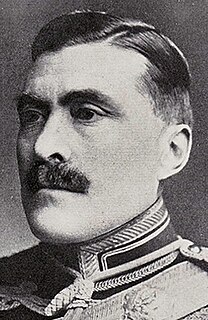 W
WLieutenant-Colonel Reginald Vincent Kempenfelt Applin, DSO, OBE was a British military officer who took a prominent part in the development of machine gun tactics in the British Army. He later entered politics, initially in two minor right wing parties before becoming a Conservative Party Member of Parliament.
 W
WArchibald Arnott was a British Army surgeon best remembered as Napoleon's doctor on St. Helena, who was present at the Emperor's autopsy. In his retirement he returned to Ecclefechan, where he is buried.
 W
WMajor Cuthbert Bromley VC was an English recipient of the Victoria Cross, the highest and most prestigious award for gallantry in the face of the enemy that can be awarded to British and Commonwealth forces.
 W
WDuncan Frederick Campbell was a Canadian-born British politician and soldier. He served as a Unionist Mmember of Parliament for North Ayrshire and died while fighting in World War I.
 W
WBernard Matthew Cassidy VC was an English recipient of the Victoria Cross, the highest and most prestigious award for gallantry in the face of the enemy that can be awarded to British and Commonwealth forces.
 W
WLieutenant-General Charles Schaw Cathcart, 9th Lord Cathcart, KT was a British soldier and diplomat. He was also chief of the Clan Cathcart.
 W
WAir Commodore Lionel Evelyn Oswald Charlton, was a British infantry officer who served in the Second Boer War. During the First World War, Charlton held several command and staff posts in the Royal Flying Corps, finishing the war as a brigadier general. Transferring to the Royal Air Force on its creation, Charlton served in several air officer posts until his retirement from the air force in 1928. Most notably, Charlton resigned his position as the RAF's Chief Staff Officer in Iraq as he objected to the bombing of Iraqi villages.
 W
WEdward Cornwallis was a British career military officer and was a member of the aristocratic Cornwallis family, who reached the rank of Lieutenant General. After Cornwallis fought in Scotland, putting down the Jacobite rebellion of 1745, he was appointed Groom of the Chamber for King George II. He was then made Governor of Nova Scotia (1749–1752), one of the colonies in North America, and assigned to establish the new town of Halifax, Nova Scotia. Later Cornwallis returned to London, where he was elected as MP for Westminster and married the niece of Robert Walpole, Great Britain's first Prime Minister. Cornwallis was next appointed as Governor of Gibraltar.
 W
WLieutenant-Colonel Sir Claude Edward Marjoribanks Dansey, KCMG, also known as Colonel Z, Haywood, Uncle Claude, and codenamed Z, was the assistant chief of the Secret Intelligence Service known as ACSS, of the British intelligence agency commonly known as MI6, and a member of the London Controlling Section. He began his career in intelligence in 1900, and remained active until his death.
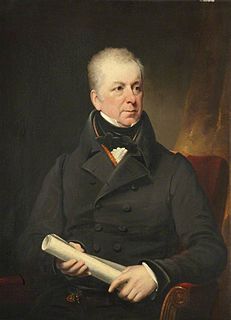 W
WIsaac Gascoyne was a British Army officer and Tory politician. He was born at Barking, London Essex on 21 August 1763, the third son of Bamber Gascoyne (senior) and Mary Green and was educated at Felsted School.
 W
WHoratio Lloyd Gates was a British-born American army officer who served as a general in the Continental Army during the early years of the Revolutionary War. He took credit for the American victory in the Battles of Saratoga (1777) – a matter of contemporary and historical controversy – and was blamed for the defeat at the Battle of Camden in 1780. Gates has been described as "one of the Revolution's most controversial military figures" because of his role in the Conway Cabal, which attempted to discredit and replace General George Washington; the battle at Saratoga; and his actions during and after his defeat at Camden.
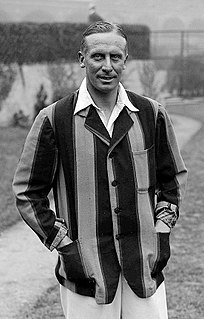 W
WArthur Edward Robert Gilligan was an English first-class cricketer who captained the England cricket team nine times in 1924 and 1925, winning four Test matches, losing four and drawing one. In first-class cricket, he played as an amateur, mainly for Cambridge University and Sussex, and captained the latter team between 1922 and 1929. A fast bowler and hard-hitting lower order batsman, Gilligan completed the double in 1923 and was one of Wisden's Cricketers of the Year for 1924. When his playing career ended, he held several important positions in cricket, including that of England selector and president of the Marylebone Cricket Club (MCC). A popular figure within cricket, he was widely regarded as sporting and friendly. During his playing days, Gilligan was a member of the British Fascists. He came to the notice of the Australian secret service during the 1924–25 MCC tour, and it is possible he helped to establish small fascist groups in Australia. It is unknown how long he remained a member, but the organisation practically ceased to exist by 1926.
 W
WCharles Grey, 1st Earl Grey, served as a British general in the 18th century. A scion of the noble House of Grey, he was a distinguished soldier in a generation of exceptionally capable military and naval personnel, serving in the Seven Years' War (1756–1763) and taking part in the defeat of France.
 W
WLieutenant-Colonel John Elisha Grimshaw VC was an English recipient of the Victoria Cross, the highest and most prestigious award for gallantry in the face of the enemy that can be awarded to British and Commonwealth forces.
 W
WMajor-General Frederick Hammersley, was a senior British Army officer.
 W
WWilliam Howe, 5th Viscount Howe, KB, PC was a British Army officer who rose to become Commander-in-Chief of British land forces in the Colonies during the American War of Independence. Howe was one of three brothers who had distinguished military careers. In historiography of the American war he is usually referred to as Sir William Howe to distinguish him from his brother Richard, who was 4th Viscount Howe at that time.
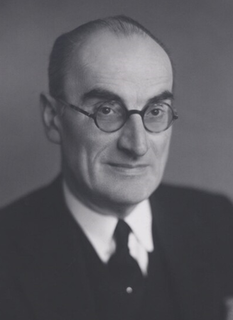 W
WGeoffrey Clegg Hutchinson, Baron Ilford QC, MC, TD was a British soldier, a barrister and Conservative Party politician.
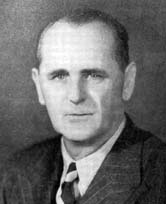 W
WConrad Powell Johnstone, known as CP Johnstone or Con Johnstone, was an English businessman and amateur sportsman who played first-class cricket between 1919 and 1948. After serving in the First World War he spent much his working life in India and is regarded as one of the key players in the development of cricket in Madras. He served in the First World War, played first-class cricket in both England and India and was also a noted golfer as well as the President of Kent County Cricket Club in later life.
 W
WSir Lees Knowles, 1st Baronet was a British barrister, military historian and Conservative politician.
 W
WLieutenant General Sir John Gaspard Le Marchant (1803–1874) was a British Army officer and governor of Newfoundland from 1847 to 1852. He later became the Lieutenant Governor of Nova Scotia (1852–1858) and Governor of Malta (1858-1864).
 W
WAir Chief Marshal Sir Trafford Leigh-Mallory, was a senior commander in the Royal Air Force. Leigh-Mallory served as a Royal Flying Corps pilot and squadron commander during the First World War. Remaining in the newly formed RAF after the war, Leigh-Mallory served in a variety of staff and training appointments throughout the 1920s and 1930s.
 W
WMajor-General Lewis Owen Lyne CB DSO was a British Army officer who served before and during the Second World War. He saw distinguished active service in command of the 169th Brigade in action in North Africa and Italy from 1943 to 1944, followed by the 59th Division during the Battle of Normandy in mid-1944, finally commanding the 7th Armoured Division during the final stages of the Northwestern Europe Campaign until Victory in Europe Day in May 1945.
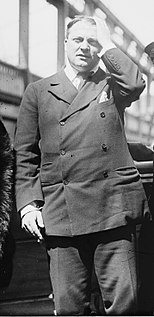 W
WWilliam Angus Drogo Montagu, 9th Duke of Manchester PC, styled Lord Kimbolton from 1877 to 1890 and Viscount Mandeville from 1890 to 1892, was a British peer and Liberal politician. He served as Captain of the Yeomen of the Guard from 1905 to 1907 under Sir Henry Campbell-Bannerman.
 W
WSir Robert Mark was a senior British police officer who served as Chief Constable of Leicester City Police, and later as Commissioner of the Metropolitan Police from 1972 to 1977.
 W
WGeorge Spencer, 4th Duke of Marlborough,, styled Marquess of Blandford until 1758, was a British courtier, nobleman, and politician from the Spencer family. He served as Lord Chamberlain between 1762 and 1763 and as Lord Privy Seal between 1763 and 1765. He is the great-great-great grandfather of Sir Winston Churchill.
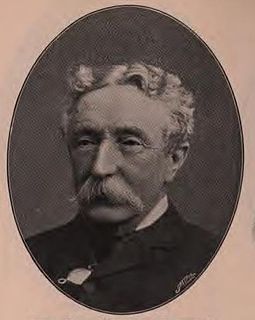 W
WColonel John James Mellor was a British industrialist and Conservative politician.
 W
WJohn Parr was a British military officer and governor of Nova Scotia. He is buried in the crypt of St. Paul's Church (Halifax).
 W
WCaptain Richard Whitaker Porritt was the Member of Parliament (MP) for Heywood and Radcliffe and became the first British MP to be killed in World War II.
 W
WLieutenant General Sir Manley Power, KCB, ComTE was a British military leader who fought in a number of campaigns for Britain and rose to the rank of Lieutenant General. He is chiefly remembered for leading a brigade of Portuguese troops under The Duke of Wellington in the Iberian Peninsular War. He is also remembered for jointly causing the removal of Sir George Prevost, governor-in-chief of British North America, for Prevost's refusal to press the attack on Plattsburgh, New York, in 1814, during the War of 1812. After his active military service Sir Manley Power was appointed Lieutenant Governor of Malta.
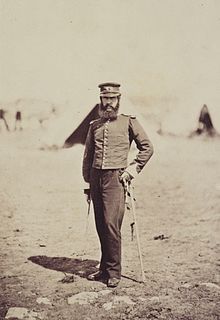 W
WGeneral Sir William Pollexfen Radcliffe was a British Army officer who became General Officer Commanding Eastern District.
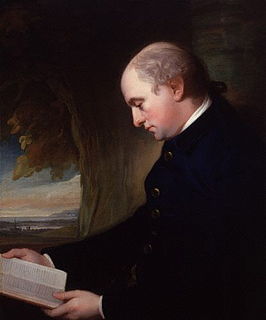 W
WField Marshal Charles Lennox, 3rd Duke of Richmond, 3rd Duke of Lennox, 3rd Duke of Aubigny,, styled Earl of March until 1750, of Goodwood House in Sussex and of Richmond House in London, was a British Army officer and politician. He associated with the Rockingham Whigs and rose to hold the post of Southern Secretary for a brief period. He was noteworthy for his support for the colonists during the American Revolutionary War, his support for a policy of concession in Ireland and his advanced views on the issue of parliamentary reform. He went on to be a reforming Master-General of the Ordnance first in the Rockingham ministry and then in the ministry of William Pitt.
 W
WGeorge Kemp, 1st Baron Rochdale, was a British politician, soldier, businessman and cricketer.
 W
WMajor-General Robert Ross was an Irish-born officer in the British Army who served in the Napoleonic Wars and its theatre in North America in the War of 1812.
 W
WLieutenant-Colonel Claude Blake Rubie was an English amateur first-class cricketer and soldier.
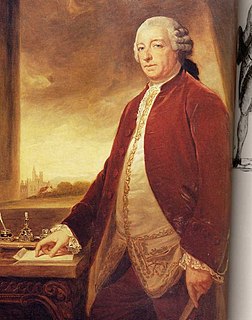 W
WGeorge Germain, 1st Viscount Sackville, PC, styled The Honourable George Sackville until 1720, Lord George Sackville from 1720 to 1770 and Lord George Germain from 1770 to 1782, was a British soldier and politician who was Secretary of State for America in Lord North's cabinet during the American War of Independence.
 W
WJohn Schofield VC was an English recipient of the Victoria Cross, the highest and most prestigious award for gallantry in the face of the enemy that can be awarded to British and Commonwealth forces.
 W
WField Marshal John Colborne, 1st Baron Seaton, was a British Army officer and colonial governor. After taking part as a junior officer in the Anglo-Russian invasion of Holland, Sir Ralph Abercromby's expedition to Egypt and then the War of the Third Coalition, he served as military secretary to Sir John Moore at the Battle of Corunna. He then commanded the 2nd Battalion of the 66th Regiment of Foot and, later, the 52nd Regiment of Foot at many of the battles of the Peninsular War. At the Battle of Waterloo, Colborne on his own initiative brought the 52nd Regiment of Foot forward, took up a flanking position in relation to the French Imperial Guard and then, after firing repeated volleys into their flank, charged at the Guard so driving them back in disorder.
 W
WHoratio Sharpe (1718–1790) was the 22nd proprietary governor of Maryland from 1753 to 1768 under the restored proprietary government of Maryland.
 W
WWilliam Petty Fitzmaurice, 1st Marquess of Lansdowne,, was an Irish-born British Whig statesman who was the first Home Secretary in 1782 and then Prime Minister in 1782–83 during the final months of the American War of Independence. He succeeded in securing peace with America and this feat remains his most notable legacy.
 W
WEdward Benn ('Ned') Smith VC, DCM was an English recipient of the Victoria Cross, the highest and most prestigious award for gallantry in the face of the enemy that can be awarded to British and Commonwealth forces.
 W
WSir John Stuart, Count of Maida GCB (1759–1815), was a British Lieutenant-General during the Napoleonic Wars.
 W
WJohn Ronald Reuel Tolkien was an English writer, poet, philologist, and academic, best known as the author of the high fantasy works The Hobbit and The Lord of the Rings.
 W
WLieutenant-Colonel George Williams was a British army officer and Liberal politician.
 W
WMajor Richard Raymond Willis VC was an English recipient of the Victoria Cross, the highest and most prestigious award for gallantry in the face of the enemy that can be awarded to British and Commonwealth forces.
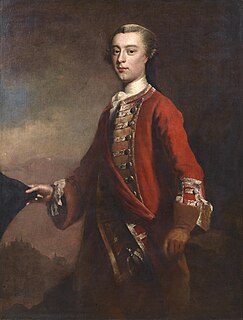 W
WJames Wolfe was a British Army officer known for his training reforms and remembered chiefly for his victory in 1759 over the French at the Battle of the Plains of Abraham in Quebec as a major general. The son of a distinguished general, Edward Wolfe, he received his first commission at a young age and saw extensive service in Europe during the War of the Austrian Succession. His service in Flanders and in Scotland, where he took part in the suppression of the Jacobite Rebellion, brought him to the attention of his superiors. The advancement of his career was halted by the Peace Treaty of 1748 and he spent much of the next eight years on garrison duty in the Scottish Highlands. Already a brigade major at the age of 18, he was a lieutenant-colonel by 23.